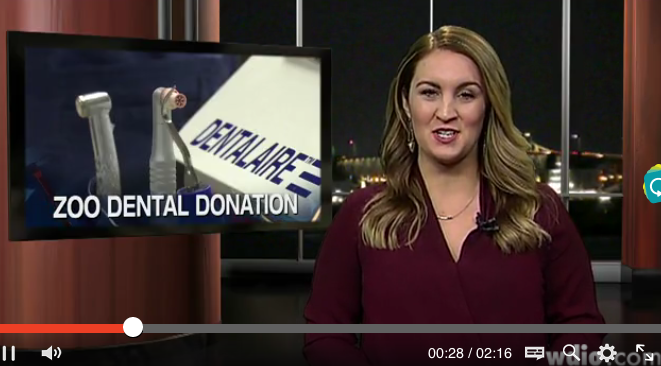Heidi Enninga
Reporter
WDIO-TV Duluth, MN
February 09, 2017 10:10 PM
The Lake Superior Zoo is on a long, slow recovery from severe flooding in 2012, but Thursday, was an important step forward.
Veterinarians gave one of the zoo’s animals a dental cleaning and exam using new cleaning tools and digital X-Ray machine for the first time. A $9,500 grant from the Foundation for Veterinary Dentistry’s Make Me Smile Program helped the zoo replace the equipment.
With help from anesthesia, Jenner, the Lake Superior Zoo’s sometimes fierce genet, made for a docile patient.
“It’s always an experience because of his personality. He is not Mr. Friendly,” Dr. Louise Beyea joked about the cat-like carnivore.
While the vet’s work Thursday morning might have been seamless, the routine procedure has been anything but. That’s because in 20-12, the zoo’s teeth cleaning equipment was literally flooded.
“We were ready to use it the day before the flood,” Beyea explained. “We had our cleaning equipment down by the bear dens all ready for the next day and unfortunately, that machine was floating in four to six feet of muddy water, which damaged it pretty severely.”
The zoo’s X-ray equipment was already outdated to the point that a procedure that modern technology could do in 15 minutes, would take Duluth zoo staff closer to two hours.
“What we had was so cumbersome and so inaccurate that the animals would have to be under anesthesia for a phenomenally long time in order for us to get films that were acceptable,” Beyea said. “We were stuck in a position where we didn’t have adequate technology and then we had no technology.”
That left zoo staff without the ability to do a complete job caring for the animal dental health. Dr. Mike Overend is on the Foundation for Veterinary Dentistry board and practices at Lake County Veterinary Clinics in Two Harbors and Grand Marais. He said that while the zoo has engineered ways to make do in the interim in terms of teeth cleaning, X-rays were a different story.
“We take X-rays as a very very important part of identifying where a problem is. There are many times that teeth that look absolutely normal that can still be very painfully infected and having a very significant impact on that life,” Overend said. “Animals have absolutely no way to tell us when they have dental pain, and consequently they live with it. They really suffer in silence, and it can take a tremendous toll on them in terms of their quality of life and even in terms of their overall health.”
While the foundation for veterinary dentistry typically donates equipment to animal shelters, Overend said the zoo’s circumstances were critical.
“The zoo was actually kind of a unique case because of the damage that was done during the flash flood of 2012,” Overend said. “They lost a significant amount of the equipment that they normally use. This grant really came as a very… wonderful replacement for that equipment.”
The donation means that dental work can finally resume. This time, vets are able to more efficiently and precisely detect issues.
For me, it’s peace of mind,” Beyea said. “I know we can do it fast, we don’t have to keep this animal under anesthesia very long, I know we’re going to get really good information that we can rely on.”
With the new digital technology, vets can also send X-rays to specialists to consult on more difficult issues.
As for Jenner, he earned all high marks and started to come to as vets completed his exam and were placing him in his crate to go back home. The cat probably won’t have to have another one for two or three years.

